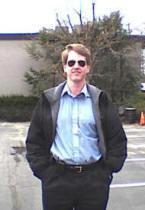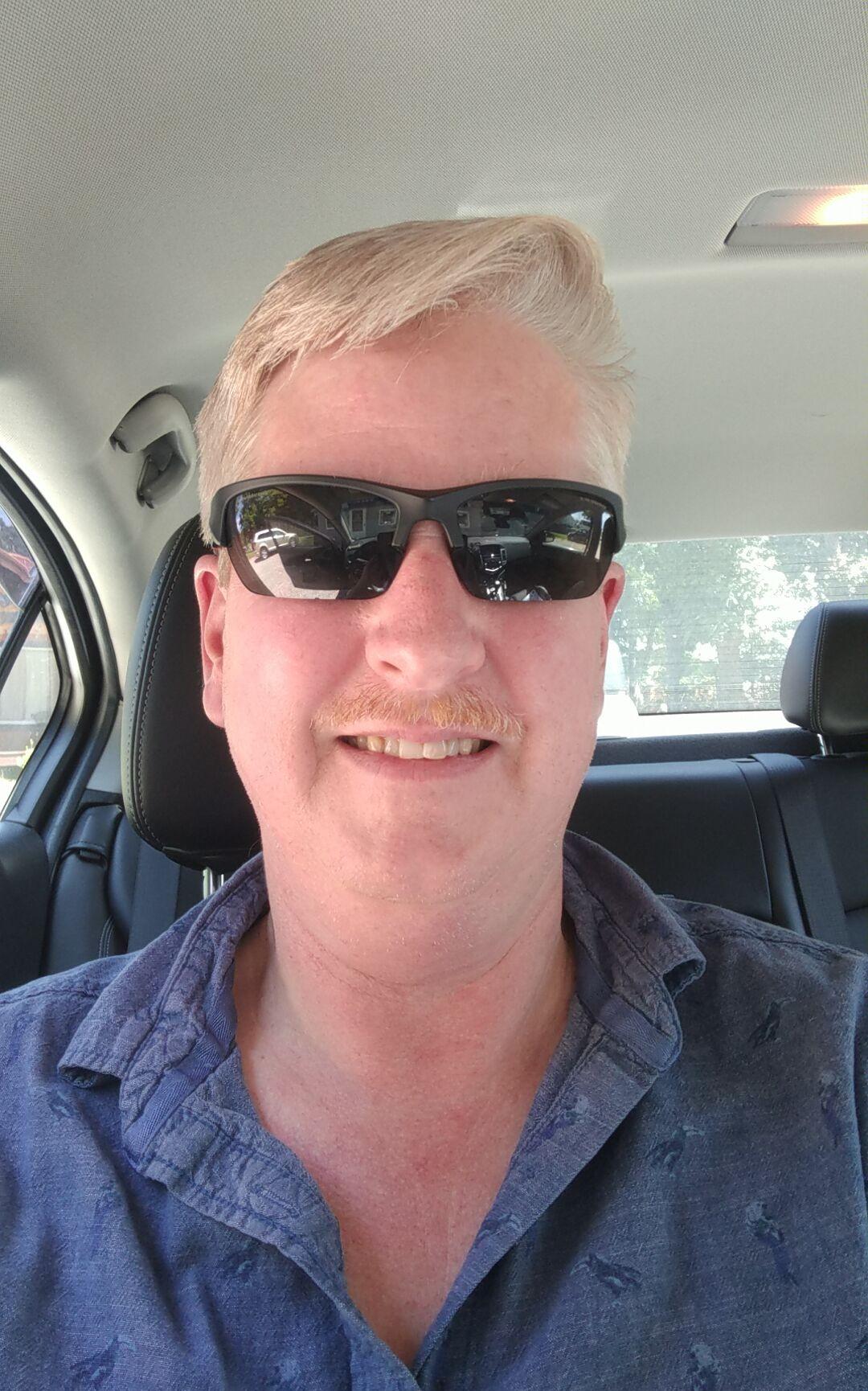About AB1JU
 My name is Brian and I was born in Illinois in 1968. In 1976 we moved to Fairfield, Connecticut. In late 2010 I moved to Hays, NC where I now reside.
My name is Brian and I was born in Illinois in 1968. In 1976 we moved to Fairfield, Connecticut. In late 2010 I moved to Hays, NC where I now reside.
I am a computer person by trade, a "techie" so to speak and I have always been fascinated by radio. I worked for a while in the early 1990's at a commercial radio station, but it just didn't pay that well. So, back to computers I went. Now, with my amateur radio license, I hope that my fascination with radio will be rekindled.
I started in Amateur Radio in the later part of 2008.
I took a technician class at the Beardsley Zoo, located in Bridgeport, CT. There were about 10 people in the class, and the instructors went through everything that could be on the test. A really great class.
I took my test on November 6th, 2008 and I passed! Then I was handed the General test, and I passed that too!! After that, I was handed still another test, the Amateur Extra. Wow. That was tough, but again, I managed to pass!!!
I was issued the Amateur Extra License AB1JU the next Wednesday, November 12, 2008. What a great morning that was! I checked the FCC database nice and early, but apparently I get up earlier than the FCC, as it wasn't there yet. I checked again after getting to work, and there it was... AB1JU! I couldn't wait to get out of work so I could start talking. I had a loaner 2 Meter handheld that I had been using for listening, and now I could use it to talk!
My original equipment consisted of a Kenwood TH-F6A HT radio, a great little tri-bander. Upon recommendations from others, I also got the SMC-34 microphone / speaker, which has the volume control and the three function buttons. I also got the programming cable so I could download the free software from Kenwood. Nice touch, Kenwood! While waiting for the new radio to arrive, I pre-programmed it in the software. When it finally arrived, I plugged in the cable, and BAM! I was ready to go. I also installed a Comet Tri-Band mobile antenna on a Diamond motorized mount - no dinging the antenna in drive-thru's or parking garages for me!
Later, I added an ICOM 7000, a Yaesu 7800 and a Kenwood D710A to my arsenal.
In the fall of 2010, I got an older Kenwood 2-meter radio and put up for testing my own Echolink simplex link. After testing in CT was completed, I hooked it up for a friend in North Carolina. Surprisingly, there wasn't Echolink on any of the area repeaters.
In December of 2010, I made the move to North Carolina. I put up a 30 foot mast with a J-Pole dual band antenna on it for the local repeaters and purchased a GRE 600 digital trunking scanner and attached it to a discone antenna on a 20 foot mast. Then, in 2011, I purchased a Motorola Maratrac VHF radio to use as a base station in the house. Around Thanksgiving of 2013, I received as a gift a set of Isotron antennas (80 meters, 40 meters, and 20 meters) and added them right below the J-Pole at approximately 19 feet above ground level. In early 2014 I purchased two CS-700 DMR handhelds to add digital capabilities to my abilities. A friend of mine helped me build a homemade G5RV antenna for some HF capabilities and I installed it across the back of the house in late 2018. With this new antenna, I took down and retired the Isotron antennas.

The current setup is now a Kenwood TK-7180 VHF radio (with a remote head mounted at my desk) for the local repeaters with a Vertex Standard UHF radio to cover UHF DMR repeaters, they are connected to the Arrow J-Pole antenna on the 30 foot mast. There are also numerous handheld and a couple of mobile radios, from the cheap no-name UHF cache radios all the way up to the Motorola's. One of my original radios, the Yaesu 7800, is still in use today as my event radio, then for regular use there are some Motorola GP380 handhelds, the Motorola XPR7550e for DMR, a couple of Motorola SL7550 / SL7550e and SL3500 radios for travel, a Motorola XPR 5550 UHF DMR mobile with a Motorola Astra Spectra VHF in my (diesel!) Chevy Cruze with the Handheld Control Heads. (all controls / displays are on the microphones. The actual radio units I have mounted in the trunk.) I use the no-name UHF radios as a general / event / ARES / AUXCOMM cache radio collection. The ICOM 7000 is temporarilly retired for now, along with my two Kenwood tri-band TH-F6A handhelds and the three CS-700 UHF DMR digital handhelds. I have a dedicated laptop for my radio programming software and also have another, slower computer dedicated for programming older Motorola radios. (MS-DOS anyone?) I also have a Motorola CP200XLS VHF handheld that, due to the frequency range it has, is programmed as a receive-only scanning radio for all of my local area emergency services. (It only goes down to 146 mHz, so can't be used for some of the amateur radio repeaters I would need to have programmed in it to make it a viable radio to use.) To round out my collection, there are the scanners - I retired the original GRE and replaced it with a Whistler 1080 that does P25 phase 2 scanning, in addition to the Uniden SDS200 in the office. There is also a dedicated, older radio shack scanner that monitors our regional VHF fire dispatch. Last, but certainly not least, is the Motorola XTS2500 that is my NC VIPER system radio. Due to my affiliation with our local Emergency Management and AUXCOMM group, I have been assigned a VIPER radio ID - so far, only used for events and testing!
I currently prefer to use the RT Systems software for most of my radio programming needs, however Chirp does come in handy here and there. I also have a Motorola subscription for all of the latest Motorola software, plus I have purchased some of the commercial Kenwood software required for those radios.
The home radio equipment is backed up for power with a Optima Blue Top Deep Cycle battery, with an APC UPS to run the main radio power supply and the radio computer in case of a power outage. For extended outages, there is a Yamaha 2400iS generator to provide extra power for not only the radio and computer equipment, but also other items in the house as required.
I can usually be found on our local repeater, W4FAR (both the VHF analog repeater, the UHF repeater and UHF DMR repeater) and occasionally I'll make an appearance on the USA Grits N Gravy Echolink conference through my BrandMeister connected hotspot.
I am currently a member of the Foothills Amateur Radio Club, and in November of 2012 I was appointed the Emergency Coordinator for the Wilkes County ARES / AUXCOMM group. In September of 2022 with the passing of our dear friend Norman Robbins (W4HF) (SK) I was appointed trustee for all of the W4FAR repeaters. I have previous affiliations with the Ashe County Amateur Radio Club and the Surry County ARES group, where I was named the training officer for the Surry group and brought some much needed training to the members, including the FEMA Incident Command System (ICS), APRS and NBEMS operations. You can find more information on the Foothills Amateur Radio Club and the Wilkes County ARES group on the Foothills Amateur Radio Club website.


